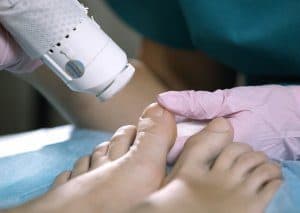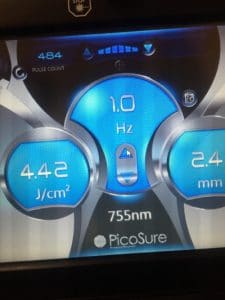How does Laser Treatment Work

What pre-treatment preparations are necessary for a successful laser procedure?
Pre-treatment preparations are crucial to ensure the success and safety of a laser procedure. Here are some common pre-treatment preparations that patients might need to follow for a successful laser procedure:
- Consultation: Schedule a consultation with a qualified and experienced healthcare provider or dermatologist. Discuss your medical history, current medications, and any concerns you have about the procedure.
- Avoid Sun Exposure: Stay out of the sun and avoid tanning beds for a few weeks before the procedure. Laser treatments are generally more effective on untanned skin and reduce the risk of complications like hyperpigmentation.
Can laser treatments be performed on all skin types?
Laser treatments can be performed on various skin types, but the effectiveness and safety of the procedure can depend on the specific type of laser used and the individual’s skin tone and color.
In the past, certain laser treatments were more suitable for lighter skin tones, as darker skin contains more melanin, which can absorb the laser energy and potentially cause skin damage, such as burns or hyperpigmentation.
Are laser treatments painful, and Is anesthesia used?
Laser treatments can cause varying levels of discomfort, depending on the type of procedure, the individual’s pain tolerance, and the area being treated. Some patients describe the sensation as similar to a rubber band snapping against the skin, while others may find it more tolerable.
To manage the discomfort, healthcare providers often use various methods:
- Topical Anesthesia: For less invasive laser treatments, especially those involving the skin’s surface, topical numbing creams are applied to numb the area before the procedure. These creams need some time to take effect.
- Cooling Devices: Many modern laser devices come equipped with cooling mechanisms, such as a cooling spray or a built-in cooling tip.
How To Care For Skin After laser Treatment?
After you got a laser treatment, skin care is extremely important, to make sure your skin heals properly and you receive the best results, here’s how you should be caring for it:
1. Keep The Area Clean: Keep the area clean with mild and fragrance free cleanser, this will help you avoid any sort of irritation. Also, make sure to pat gently, do not rub!
2. Moisturize Regularly: Try hydrating moisturizer, it will help your skin recover! You can use aloe Vera or hyaluronic acid!
3. Avoid Direct Exposure To Sunlight: Keep the treated areas away from sunlight, since after the treatment your skin will be extra sensitive, which can make it much easier to get damaged. It’s a good idea to use screens with SPF 30 or higher, even if you are indoors.
4. Avoid Makeup: Make up can cause irritation on the newly treated area, it may even increase the risks of infection, therefore it’s best to make sure you avoid it until your doctor doesn’t advise you.
5. Avoid Heat and Sweat: After the first few days of your treatment, make sure to avoid hot showers, saunas, intense exercises, since heat and sweat will lead to irritation.
Can Laser Treatment Be Effective Enough To Reduce Or Remove The Appearance Of Tattoos?
Yes, fortunately laser treatment can reduce or eliminate the appearance of tattoos, this process is also known as laser tattoo removal! But here are few things you should keep in mind about this treatment:
• Multiple Sessions: Most of your tattoos will require multiple Sessions, especially depending on the factors like color of the tattoo, size and depth.
• Skin Tone and Age: Removal is influenced by skin tones and tattoo age. Older tattoos will fade away more easily, and laser will be adjusted depending on the skin tone to make sure risk of scarring is reduced.
How Does Laser Treatment Work?

There are two main types of lasers, and they are either hot lasers, or cold lasers. Cold lasers function by simply shining a light on the area without heating the skin. This light bolsters the body’s immune system, and encourages it to fight the fungus on its own. Additionally, they speed up the regrowth of the nail following the procedure.
However, there is some contention on the effectiveness of cold lasers. Dr. Kavic MD, Medical Director of Body Beautiful Laser Medi-Spa posits that “only hot lasers work because it is the heat from the laser that destroys the fungus.”
Choosing a Laser Treatment
Cold and hot lasers have differences, and there are also variances in how long we apply the laser. Specifically, most FDA approved laser treatments deliver in short, rapid pulses. There are also long-pulse lasers that are approved and effective.
The latest innovation in laser technology— Q-switched lasers— are able to deliver rapid pulses of light in mere nanoseconds for effective treatment. Alternatively, cold-wave lasers utilize two longer wavelengths of laser light to fight off toenail fungus.
In the past there used to be carbon dioxide lasers, however we seldom find their use modern medicine as they are quite outdated.
Long Pulsed Laser

There was a problem with its consistent procedure. While other laser treatments require little to no aftercare, long burst laser treatments such as PinPointe Laser require that the patient undergo strict aftercare measures, and according to Dr. T few of the patients that they treat under her care follow through with the instructions given to them. Second generation technology has greatly improved both the time it takes to treat the area, and decreases the excess heat.
Q-Switched Lasers
“I have treated thousands of patients successfully with the Q-Switch Laser. We have found it to be highly effective in resolving all types of fungal toenail infections in addition to yeast and mold toenail infections.” says Dr. Teimouri. While treating these conditions with Q-Switch Laser is effective.
Another newer addition is the Q-Clear Compact Laser from Light Age, which belongs to the latest class of Q-switched lasers. The treatment takes 4-15 minutes and results are visible after only one session. Also in this class of lasers is the Lightpod Neo from Aerolase. One of the other modern laser techniques is Q-Clear Compact Laser from Light Age. This type of laser belongs to a class of lasers known as Q-switched lasers. The treatment lasts around 4-15 minutes with visible results after only one session of therapy. Another type of laser in this class is the Lightpod Neo from Aerolase. Dr. K. uses it in tandem with Pro-Nox, which is a pain-reducing nitrous oxide delivery system
Dr. K uses LightPod Neo in combination with Pro-Nox, a pain-reducing nitrous oxide system that ensures patient comfort during the treatment. “Usually 5-6 treatments are necessary and we perform them every two weeks.” he adds.
Heat Lasers
There are several options for heat based lasers, and one such option is the Cutera Genesis plus. This laser offers flexibility when dealing with thicker or thinner nails, and sessions last roughly 10-30 minutes.
Another heat laser available is the JOULE ClearSense, and touts a shorter session time of 10-20 minutes with immediate results.
Finally, CoolTouch VARIABreeze utilizes a coolant during the procedure, while also using a laser that adjusts to prevent overheating. The session lasts around 15-20 minutes.
Cold Lasers
Cold lasers offer some unique benefits to patients that may be preferable to the benefits of a heat laser. One such laser is the LunulaLaser that takes only 4 5-12 minute sessions. Yet it is able to treat the entire nail while remaining odor-free (something that heat lasers cannot claim to offer).
Another cold laser to consider is the Noveon NaiLaser. It is able to treat four toes in one session. However, sessions take about a half-hour, and can require up to four sessions for extreme cases.
